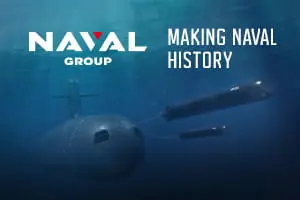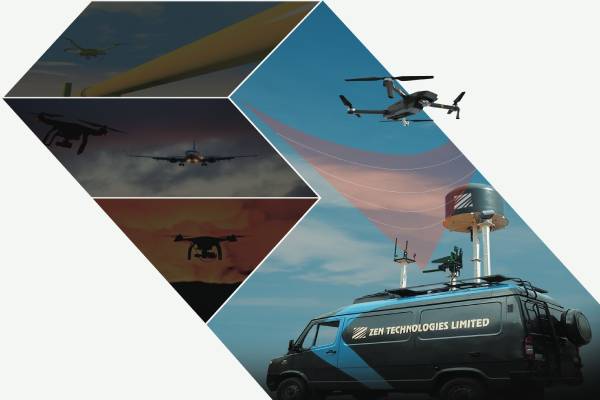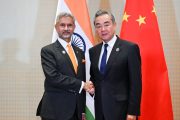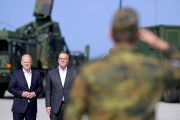Editor’s Note
Historically, nations that have been over dependent on supply of ordnance from abroad have faced difficulties in their procurement when they have gone to war. With ordnance being a critical component shaping the course of battles, the best way of minimising such risks is by ensuring most of the requirements are indigenously produced. The Admiral, in his article, illustrates this view with examples and goes onto propagate the cause of indigenisation of defence requirements.
…………………………………………………………………………………………………………………………………………………………………………………………………
For The ‘Shakti’ That ‘Bharat’ Needs: Indigenise Ordnance
‘Bang for the Buck?’
As this website marks its first year as a ‘mouthpiece for indigenisation’ of our defence capabilities, it is time to underscore that it’s very difficult and quite unwise to fight wars if the ‘buck’ needed for making the ‘bang’ i.e., money for ordnance is essentially paid to other countries. When all is said and done, at the tactical level, war fighting almost always comes down to putting ordnance on target and, in defensive terms, avoiding becoming targets for the enemy’s ordnance. Cumulatively, destruction or liquidation of targets enables the attainment of operational and strategic objectives of warfare. In turn, these help achieve the national strategic purposes and outcomes of war, whether it is a war that is thrust upon us, or one of choice. While competence at tactical levels cannot necessarily overcome bad operational level choices or strategic bungling, a good politico-military strategy could, nevertheless, come a cropper due to tactical inadequacies and/or incompetence.
Quantity has a Quality of its own
In a general sense, therefore, the history of warfare of the past three centuries demonstrates that the quantity and quality of firepower available to belligerents is very critical to campaigns being won or lost at the tactical and operational levels. Enormous quantities of ordnance are needed: usually more than forecast; often in excess of that can be logistically delivered in time to war-fighters. Sometimes, warriors run out of it contributing to a Clausewitzian ‘culminating point of attack or defence.’
It is rightly said that quantity has a quality of its own. Its converse is also true, especially when related to precision guided munitions (PGM – used here for all guided/homing and smart ordnance) wherein the designed destructive capability of homing or guided ordnance delivered with accuracy drastically reduces the quantities of ordnance required. Western and Soviet/ Russian military studies abound in statistically examining these issues. In India we have so far not been seriously inclined to look at historical evidence or even collate our own data with care to derive our own inferences.
Our most serious inadequacy is, of course, in the enormous dependence on ordnance imports of practically every category for each Service. History provides sufficient evidence that in any war belligerents who are severely dependent on imports can also be severely constrained in the boldness of their tactics as well as in the robustness of their operational plans thereby complicating the attainment of military-strategic objectives. This, in turn, influences the scope of policy/political objectives actually desired. There certainly can be other very valid reasons for victory or defeat in war but the ability to engage at the desired intensity, in large measure, is governed by the quantity- quality (QQ) aspects of ordnance available.
What does history tell us?
The Arab-Israeli war of 1948 as well as Israeli involvement in the Suez Crisis of 1956 resulted in Israelis wanting to become more self-sufficient in every aspect of ordnance requirements; from small arms to many calibres of ammunition. Also, it led to the beginnings of manufacture of missiles and other PGMs even as their dependence on platforms continued. Just before the “Six-Day” war in mid- 1967, the point was driven home when France, then Israel’s biggest supplier of hardware, choked exports. By the time the “Yom-Kippur” war of Oct 1973, which took Israeli Defence Forces by surprise, the IDF was far more self-sufficient in many, if not most, categories of ordnance. It had been able to save foreign exchange, create stockpiles, have the intellectual capital of their own R&D for design and manufacture, modifications, innovation and rapid production.
This was an important factor that helped turn the tide against very much more numerous Arab forces. It was a close-run victory in which Egyptian deception and excellent initial successes could have been better exploited. Arab forces, on the other hand, while well-equipped in 1967 and even better placed in 1973, were almost entirely import-dependent on hardware and ordnance. It would be pertinent to recall that even in 1967, the Arabs were on the verge of initiating war when the IDF pre-empted them. Given that these were both wars of choice as such for the Arabs, they would have been better-placed had they pursued their ‘swavalamban’ (self-sufficiency) with some strategic purpose. Today, Israel is not only very highly self-sufficient in ordnance, it is a global exporter. Fortuitously for it, Arab neighbours still largely remain “valued customers” for ordnance that the world offers them, sometimes readily, and at times reluctantly.
The Iran-Iraq war of 1980-88 is hardly studied in India but is instructive in many ways. The Shah’s impressive collection of platforms and a fair bit of ordnance from the West was inherited by the revolutionary regime. Iraq was simultaneously armed by the West as well as by the USSR. Saddam Hussein was also confident that his sources of armament would not quite dry up but Iran would have great challenges. It became a war of choice for him. Shah’s Iran had not bought sufficient ordnance for their advanced fighters like the F-14 Tomcats. Different sources suggest that they had merely 125- 150 of the long-range Phoenix AIM-54 Air-to-Air missiles for the 78 F-14s.
Given the time it takes to develop tactical prowess for ordnance delivery in combat, relatively inexperienced pilots could not get any significant kills out of these and the efforts to integrate Sparrow and Sidewinders already in the inventory took a long time to fructify. For artillery shells, tank ordnance as well as naval ordnance, Iran faced many difficulties as the war dragged on for eight years. Both belligerents displayed considerable ingenuity, helped in no small way by the greed and changing motivations of some governments as well as very questionable “arms agents”, in obtaining spares, ammunition as well as underground technicians.
The Falklands/ Malvinas conflict of 1982 should also interest us in terms of ‘swavalamban.’ Other than a modest small-arms industry and some small- calibre ammunition, Argentina was an importer of platforms as well as ordnance. It embarked on a war of choice convinced that it would be a quick and decisive victory. The resolve and the force with which its adversary could and did respond were not adequately estimated. Indian readers would be interested to know that India’s liberation of Goa was the politico-diplomatic template for the Argentine Junta! In the event, Argentina started with only five or six of the AM-39 Exocet anti-ship missiles fired by the Super Etendards that had to operate from shore instead of the carrier for which they had been bought. More aircraft and ASMs were expected only in July 1982. Apart from the diffidence and excessive caution of the Argentine Navy, starting a war with such inadequacies was quite unwise. The British, in contrast had “British” ordnance as well as the Exocets. It established a long supply line and used all the pressure as a NATO member on France and Germany, as well as the US to choke hardware to Argentina.
France prohibited its technicians to assist the Etendard crew in weapon preparation. Interestingly, Israel already an arms supplier, had set aside its earlier chagrin at Argentina’s softness towards ex- Nazis and stepped in with technical help for Exocets as well. In brief, even at a distance of 8000 miles, Britain enjoyed net superiority, not the least because its ‘swavalamban’ was useful in comparison to its enemy’s severe dependency.
The Vietnam War provides an unusual validation of the difficulties of fighting with ‘Made Abroad’ ordnance and platforms as well as the advantage of having allies that may stand by you the whole way. The South Vietnamese forces (ARVN) came to be almost wholly equipped by the Americans, who also did most of the heavy fighting until about end-1972. The intrepid North Vietnamese Army (NVA) obtained much of its hardware and ordnance from the USSR and from Communist China. Once the US began disengaging under ‘Vietnamisation’, the ARVN could not adequately take up the slack nor was as much ordnance and wherewithal available once the US decided to cut its own losses and leave the South to its inevitable fate. The Soviets continued to help the North until the end. China also did, but already had adversarial ambitions and old rivalries with Vietnam coming to the fore. Analogies from the Vietnam War may have inferences of interest when we consider the India versus a Sino-Pak confluence.
Inferences for India
The broad description of these wars helps us draw a few inferences. The case for massive indigenisation of our ordnance is actually strengthened even further if we were to go into greater historical details.
Wars that are thrust upon a side sometimes come as a surprise, rarely about ‘If’, but more often about ‘when’. Wars of choice between states, on the other hand, should rarely if ever, be started from a position of weakness, under-preparedness or underestimation of the enemy. The above illustrations as well as many more bring this lesson home.
It may be unwise to state that the next conflict would be ‘short and intense’ as has been occasionally said at very senior military and political levels for quite some years. Wars are about the achievement of one’s politico-strategic objectives through violence or the prevention of an enemy achieving his with equal or more violence, and perhaps improve one’s strategic situation thereby. Duration and intensity are not pre-determined quantities; they are dynamic and problematic in the way they unfold.
In a Sino-Indian conflict, assuming it is one of choice for China, what would Chinese politico- strategic objectives be? What could be their estimated duration for achieving their objectives and what would be the posturing, spread and combat-tempo with which they would like to achieve them? In turn, what would be the objectives and intensity of counter-warfare that India might need to wage and the duration in which these could be achieved?
As a corollary: at the military- tactical level, far more ordnance has been statistically seen to have been expended than targeting needs seemed to suggest at first. Bombing surveys carried out with some seriousness by Americans repeatedly show this. Even the Gulf War Bombing Surveys indicate that far more PGMs were needed than envisaged. This factor is in addition to the frequent reality that technical accuracy of low CEP (Centre Error Probable) does not automatically result in the desired tactical effect.
There are no guarantees that friends, even long-standing ones, will supply ordnance when most needed. It is good to remember that nations are happier to sell ordnance than they are with the buyer wanting to use it in war. Warring states have to go to great lengths and expense to buy ordnance, especially PGMs if they did not adequately provision in advance, or the self-comforting calculations of a quick victory were wrong. Quantity will almost always have a quality of its own.
It is also very difficult to be free of foreign technical help, and even restraints especially for missiles and other PGMs. There are unsaid motivations for exporters to withhold critical data, preparation hardware, spares and ‘IPR’. Very honest assessments have to be made about the degree of true autonomy a user-state may have for combat use of ordnance bought off-the-shelf from elsewhere.
Next, and flowing from the above, the heavily software- dependent PGMs that we have/ wish to have may have “malware” that prevents correct trajectories or degrades accuracy in certain geographic areas/ by time/ by launch mode etc. Post-mortems may result in the user being blamed for lack of adequate competence, etc. Very few nations that mean business have been comfortable with imported “smart” munitions. China certainly has not been. India ought not be.
Furthermore, importing large quantities of PGMs have technical and physical issues of storage and shelf-life; development of counter-measures by an adversary that degrades effectiveness; downstream dependence on upgrades; shutting of original manufacturing lines; complications of mergers and acquisitions; and of course, sheer costs of inventory for a war that may not happen!
There are enough CAG and media reports of serious shortages in almost every category of ordnance. If not properly planned for, such shortages could also exist in indigenous ordnance. However, for imported ordnance, this critical information is available with the supplying country. The UK knew from France that Argentina had only five-six AM-39 Exocets and the Royal Navy knew enough about the weapon’s characteristics even if it did not have good counter-measures. Such information could be shared for favours or obtained for a price. In that sense, it is reasonable to say that there are actually no friends, just money and other interests of statecraft in the international arms trade.
Finally, it is always useful to keep in mind that when it comes to ordnance that is essentially conceived and ‘Made in India’, albeit with some external hardware and inputs if absolutely inescapable, fully justifies the axiom that “perfect is the enemy of good enough!” A good level of ‘Swavalmban’ is better than perfect imports.
These aspects would be elaborated in a subsequent article.
(Disclaimer: The views and opinions expressed in this article are those of the author and do not necessarily reflect the official policy or position of BharatShakti.in)





































2 Comments
Krish
One cannot disagree with the articulation made by Rear Adm Sudharshan. Q&Q is an important issue and we need PPP model in Defence Production in a big way. Some innovative mechanisms out of box thinking is required to create capacity in Pvt sectors to get into defence production in a big way to enhance Indigenous manufacturing content so that life cycle support is provided by Indian Companies/JVs that is essential to meet any eventuality at any time.
Sudarshan Shrikhande
Krish, you are right. Actually, we need to have not only private players coming in, but PPP firms as well as PSUs/ DPSUs all working at much greater levels of efficiency and at much deeper levels of commitment than at present. These aspects would be covered in subsequent parts of course. Sudarshan Shrikhande